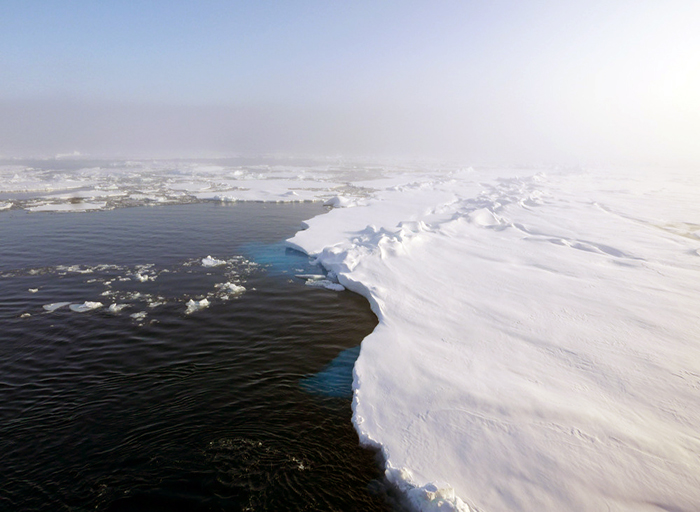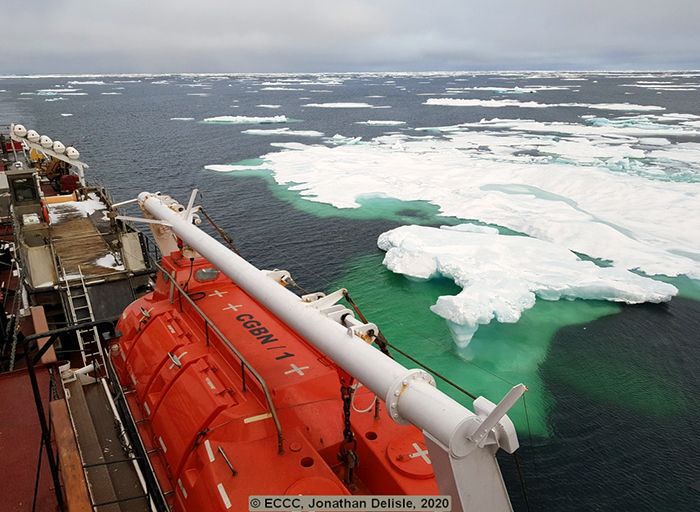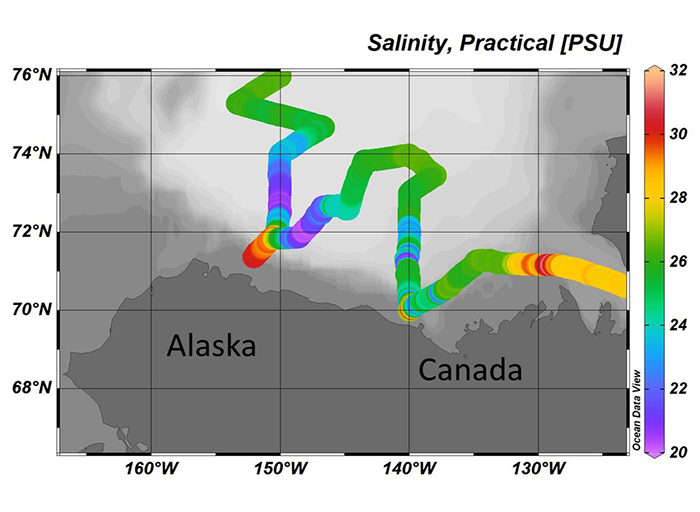Dispatch 21: Green water!
Birgit Rogalla & Susaie McLatchie
September 27, 2020
As we made our way from the central Canada Basin south towards the Alaskan coast, the water colour transitioned from clear blue to green, then the green faded away and as we neared the coast, it gradually became darker. At the same time the water color changed, the thermosalinograph (TSG) and underway systems started reading out unusual values. The TSG receives water pumped in from right below the ship, allowing continuous collection of near-surface measurements. The underway system indicated a clear change to low salinity water, massive spikes in fluorescent dissolved organic matter (FDOM). The nearby measurements at our stations indicated a spike in the nutrient silicate in the surface water.
It is a great pleasure of field work to have the opportunity to see first-hand interesting shifts in the oceanography. The white backdrop of the ice allowed us to clearly see the difference in the colour of the water. Since we experienced the same light conditions the entire day, it is unlikely that the this shift in colour of the water was a trick of the reflection of the sky. We then began to share ideas on where this water may be coming from.
Low salinity water could be coming from sea-ice melt, but water that is high in FDOM and silicate points to water that has traveled over land, such as happens with river water. Because of the different composition of the water, it absorbed light differently, which is what we perceive as a change in colour. We suspected the mighty Mackenzie river is the source. Although we were quite west and far from the mouth of the Mackenzie river, the prevailing wind conditions can cause the Mackenzie river water to be pushed westward along the coast, then towards the basin, to our current location. The water samples we will be bringing back to our shore labs for analysis will help confirm the source of this band of fresh water. Is it really river water and if so, which river is the source?



